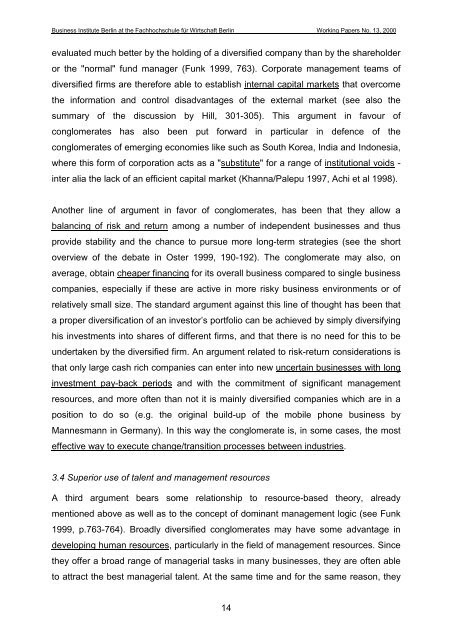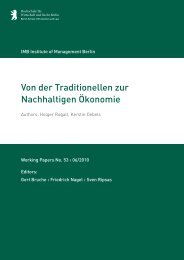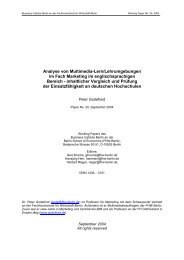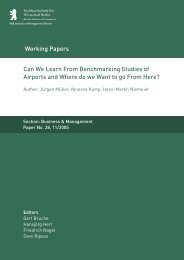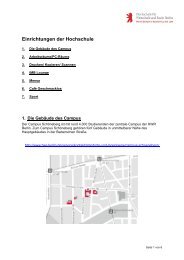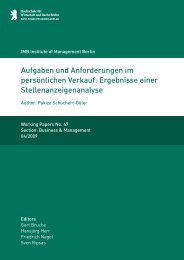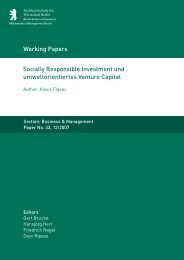Corporate Strategy, Relatedness and Diversification Gert Bruche
Corporate Strategy, Relatedness and Diversification Gert Bruche
Corporate Strategy, Relatedness and Diversification Gert Bruche
Create successful ePaper yourself
Turn your PDF publications into a flip-book with our unique Google optimized e-Paper software.
Business Institute Berlin at the Fachhochschule für Wirtschaft Berlin Working Papers No. 13, 2000<br />
evaluated much better by the holding of a diversified company than by the shareholder<br />
or the "normal" fund manager (Funk 1999, 763). <strong>Corporate</strong> management teams of<br />
diversified firms are therefore able to establish internal capital markets that overcome<br />
the information <strong>and</strong> control disadvantages of the external market (see also the<br />
summary of the discussion by Hill, 301-305). This argument in favour of<br />
conglomerates has also been put forward in particular in defence of the<br />
conglomerates of emerging economies like such as South Korea, India <strong>and</strong> Indonesia,<br />
where this form of corporation acts as a "substitute" for a range of institutional voids -<br />
inter alia the lack of an efficient capital market (Khanna/Palepu 1997, Achi et al 1998).<br />
Another line of argument in favor of conglomerates, has been that they allow a<br />
balancing of risk <strong>and</strong> return among a number of independent businesses <strong>and</strong> thus<br />
provide stability <strong>and</strong> the chance to pursue more long-term strategies (see the short<br />
overview of the debate in Oster 1999, 190-192). The conglomerate may also, on<br />
average, obtain cheaper financing for its overall business compared to single business<br />
companies, especially if these are active in more risky business environments or of<br />
relatively small size. The st<strong>and</strong>ard argument against this line of thought has been that<br />
a proper diversification of an investor’s portfolio can be achieved by simply diversifying<br />
his investments into shares of different firms, <strong>and</strong> that there is no need for this to be<br />
undertaken by the diversified firm. An argument related to risk-return considerations is<br />
that only large cash rich companies can enter into new uncertain businesses with long<br />
investment pay-back periods <strong>and</strong> with the commitment of significant management<br />
resources, <strong>and</strong> more often than not it is mainly diversified companies which are in a<br />
position to do so (e.g. the original build-up of the mobile phone business by<br />
Mannesmann in Germany). In this way the conglomerate is, in some cases, the most<br />
effective way to execute change/transition processes between industries.<br />
3.4 Superior use of talent <strong>and</strong> management resources<br />
A third argument bears some relationship to resource-based theory, already<br />
mentioned above as well as to the concept of dominant management logic (see Funk<br />
1999, p.763-764). Broadly diversified conglomerates may have some advantage in<br />
developing human resources, particularly in the field of management resources. Since<br />
they offer a broad range of managerial tasks in many businesses, they are often able<br />
to attract the best managerial talent. At the same time <strong>and</strong> for the same reason, they<br />
14


